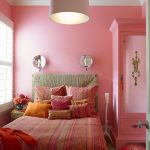When it comes to decorating our bedrooms, many of us focus on aesthetic appeal and personal style. However, have you ever considered the psychological impact of your bedroom colors? Believe it or not, the colors you choose for your bedroom can have a significant impact on your mood, emotions, and even your sleep quality.
Color psychology is a fascinating field that looks at how different colors can affect human behavior and emotions. In the case of bedrooms, it is important to choose colors that promote relaxation, tranquility, and restfulness. Here are some common bedroom colors and their psychological effects:
1. Blue: Blue is often associated with calmness, serenity, and relaxation. It can help lower blood pressure, slow down heart rate, and reduce stress levels. This makes it an ideal color choice for bedrooms, as it can promote a peaceful and restful environment.
2. Green: Green is often associated with nature, growth, and renewal. It can have a calming and rejuvenating effect, making it a great choice for bedrooms. Green is also believed to have a balancing and harmonizing effect on emotions, making it a good choice for those who struggle with anxiety or mood swings.
3. Gray: Gray is a neutral color that can evoke a sense of calmness and sophistication. It can create a sense of balance and stability in a room, making it a good choice for bedrooms. However, too much gray can feel cold and dreary, so it is important to add in warmer colors or textures to liven up the space.
4. Purple: Purple is often associated with luxury, creativity, and spirituality. It can evoke a sense of mystery and elegance, making it a great choice for bedrooms. Purple is also believed to stimulate creativity and imagination, making it a good choice for those who want to enhance their creative endeavors.
5. Yellow: Yellow is often associated with happiness, energy, and positivity. It can help lift your mood and brighten up a room, making it a good choice for bedrooms. However, too much yellow can be overwhelming and overly stimulating, so it is best to use it as an accent color or in moderation.
It is important to keep in mind that everyone responds to colors differently, so it is important to choose colors that resonate with you personally. Experimenting with different colors and combinations can help you create a bedroom that promotes relaxation, tranquility, and restful sleep. Whether you prefer calming blues, soothing greens, or elegant purples, there is a color palette out there that will help you create the perfect bedroom oasis. So, next time you redecorate your bedroom, consider the psychology of colors and choose hues that will enhance your well-being and overall happiness.
 darbylanefurniture.com Interior design ideas with the latest interior inspiration
darbylanefurniture.com Interior design ideas with the latest interior inspiration



















